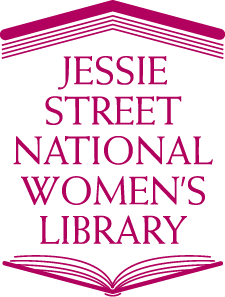Tapestry series no. 42
Contributed by Ann Rushton
Madge Edis Pickburn (née Morris) was born 14th January 1912 at Inverell, NSW. My mother was upper class. If my Gran, Mary Ann Morris (née White) was the daughter of Mrs JJ Whyte (née Carolyn Peacock) from Nunawadding, Victoria, then I can vouch for this statement as it is documented in the history of my maternal mother and grandmother.
Madge was born into an era where young ladies were educated in how to embroider, sew, paint and learn the ‘social graces’. These included how one entertains, cooking, the art of setting the table, making pleasant conversation with guests, and learning how to play a musical instrument. Madge learnt to play the piano.
My mother was even matched to a suitable gentleman of ‘her class’. When told that, I said, ‘You are kidding – even in your day and era?’ The suitable gentleman was a doctor. When Madge was a young girl, my three aunts were sent by train to board at St Catherine’s Girls Grammar in Sydney. Gran said ‘I won’t have my girls travelling to and from school, unaccompanied on the trains from Marulan NSW to Sydney every day.’
Madge was a boarder for so many years at St Catherine’s. Then she became a trained primary school teacher. All my aunts were expected to enter a suitable profession before they married. Madge had a speech impediment that rendered her voice a little above a whisper. Academically Madge passed her primary teaching, but she told me that on her practicum rounds, the children ‘ran amok’ because she could not raise her voice. However, St Catherine’s Grammar Head of School asked Madge to teach Matriculation, Physiology, Anatomy and Biology. Madge was paid to ‘live in’ and be the girls’ house mistress as well.
Holidays with Gran and Grandad Morris (an Anglican Priest) were precious times spent with Mum’s sisters, Beth, Ruth and Barbara. Trips into town were by horse and buggy. Gran did Madge’s hair just so. Her long tresses were carefully braided. Dresses were made by Gran. Gloves and hats were worn.
An interesting cabinet was underneath or by the homestead. It was a ‘Drip Safe’ with little water tanks above the cabinet so water could drip down the sides, which were covered in hessian to protect food from flies. The breeze would pass through the wet hessian thus cooling the food inside. There were no fridges in those days. Madge finally married (not the gentleman doctor who visited so often but a curate). Madge was of an era where Gran actually said words like ‘You are not fit to be a lackey in a hotel’ to the prospective groom. Today young people would find that hard to believe. As Dad was a curate without a Parish their engagement had to be for seven years. Madge still taught at St Catherine’s and was only allowed on the occasional weekend leave.
Mum grew up in the days where furniture was important. One had to know their uses. For example many people assumed that all outback Australians had outback toilets. This was not so. Gran had complete bathroom facilities. A commode was used the bathroom of the household. This consisted of a large comfortable chair. It did look like any other tapestry woven wooden chair. A chamber pot was discreetly placed underneath the chair.
Gran would add three parts water to one part chamber pot collection to the garden at Marulan. Gran also made chairs out of beer kegs, covering them with material and cushions for use inside the home.
Cooking was carried out on a combustion stove which required wood to keep up the heat in the furnace compartment. A gauge measuring the temperature could be altered by using more or less wood as required.
I could not imagine Mum or Gran learning how to cook on it. There was an oven with hot plates on top. Long days in NSW could reach up to 100 degrees Fahrenheit. Therefore the cook had to be adept. There was a place for the flat iron heated on top for the ironing when needed and a place for the kettle which was permanently there.
Lights were electric or by candelabra with many candles lit in special holders. These could hang from ceilings of rooms or sit on a large table. Smaller ones would be on a side table for reading or writing.
In the days before the television His Masters Voice was a large record player with a loud trumpet on top to amplify the sound of a large record placed on it. An automatic arm was placed on the record track; the arm had a stylus on it. The machine was occasionally wound up by a rotating handle. Singing around the family piano was popular. The radio was a large piece of furniture also. Picnics at the beech with other families were also popular.
Madge was married in 1938. My late father was born in 1909 just before the outbreak of WW2. My parents had two children, Jill and Jeffrey. Dad was a Chaplain in New Guinea for four years. My sister Joan and I were born after the war.
My mother, Madge, was so brave I thought, living in Sydney with my aunt and Barbara during those war years, with two young children. Mum had to live on coupons. Madge was allowed for example two eggs per child under three, once a week.
Once a munitions factory in Parramatta was blown up by enemy forces. I loved mum’s words at the end of the war: ‘We all danced in the streets of Sydney, streamers were sent down from the tall buildings. All the lights were on and bands played. We danced until midnight in the first time in four years. Then of course waiting for your Dad to come home from New Guinea.’
Mother is now 86; strong and healthy but with Alzheimer’s Disease. I am Ann her youngest daughter aged forty six. As I write I feel privileged to have shared some of mum’s memories.
What a brave, ordinary, lovely, charming mother. I’m proud to be her daughter. Apart from giving to the church, Madge supported other charities in her later years. A mother full of love and compassion for her family and others.
God bless you Madge – my Mum. Someday I hope future generations will enjoy reading this story of an ordinary quiet Australian lady.

